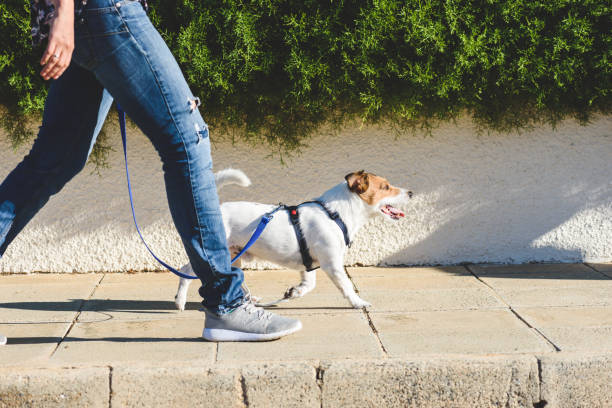Essential Tips for Asserting Leadership with Your Dog.
In the animal kingdom, particularly among social creatures like dogs, the concept of a pack and its leader is fundamental. Dogs, descendants of wolves, naturally respond to a hierarchical structure, which influences their behavior and their interactions with humans. Being a pack leader is not about dominance or fear; it’s about providing guidance and setting boundaries. Here’s how you can establish yourself as a pack leader to foster a healthy, respectful, and fulfilling relationship with your dog.
Understanding the Pack Leader Concept:
The pack leader in dog psychology is the figure who demonstrates calm, assertive energy. This role is characterized by leadership qualities such as confidence, consistency, and clear communication. Dogs, by their nature, follow leaders who exude these qualities because such leaders provide security and structure.
Why Being a Pack Leader is Important:
Without a clear leader, dogs can exhibit behavioral problems such as anxiety, aggression, and disobedience. They may also assume the pack leader role themselves, which can lead to more serious issues such as resource guarding, excessive barking, and even biting. Establishing yourself as the pack leader helps avoid these problems and creates a more harmonious living environment.
How to Be a Good Pack Leader:
- Exercise Your Dog Regularly: Physical exercise is not just good for your dog’s health; it also helps to reinforce your role as a leader. Regular walks, runs, or play sessions are crucial. These activities should be led by you — the dog should follow your pace and direction.
- Set Rules and Boundaries: Just as in any functional society, rules are essential. Define where your dog can go in the house, when they eat, and where they sleep. Enforcing these rules consistently will help your dog understand their boundaries within your “pack.”
- Control Resources: As a pack leader, you should control resources such as food, toys, and treats. This practice teaches your dog to see you as the provider and decision-maker. For example, make your dog sit and wait calmly before feeding or giving treats.
- Project Calm, Assertive Energy: Dogs are very sensitive to emotional cues, so it’s important to remain calm and assertive. This means being firm but fair in corrections and not getting angry or frustrated.
- Lead the Way: When walking your dog, lead the way. You should enter and exit the doorway first. This symbolizes your leadership and sets the tone for the walk.
- Training and Obedience: Regular training sessions are crucial in establishing and maintaining your role as a leader. Simple commands like sit, stay, come, and down are foundations of good behavior and respect.
- Socialization: Expose your dog to different environments, animals, and people. This exposure not only helps your dog become well-adjusted but also looks to you for guidance in new situations, reinforcing your position as the pack leader.
- Give Affection Appropriately: While it’s important to show love to your dog, it’s equally important to provide affection at the right times. Reward calm-submissive states with affection to reinforce behaviors that you want to encourage.
Mistakes to Avoid in Leadership:
- Inconsistency: Being inconsistent with rules and boundaries can confuse your dog and undermine your leadership.
- Negative Reinforcement: Using fear or intimidation as a tool for obedience can lead to behavioral issues and affect your dog’s trust towards you.
- Neglecting Needs: Ignoring your dog’s basic needs like exercise, mental stimulation, and affection can lead to a breakdown in the leadership dynamic.
Understanding Leadership Styles:
Leadership does not mean the same thing to every dog. Each dog’s personality and history can affect how they perceive and respond to your leadership style. Some dogs may require more gentle guidance, while others may need a firmer hand. Tailoring your approach to fit your dog’s individual needs is crucial for effective leadership.
The Role of a Pack Leader in Multi-Dog Households:
In homes with more than one dog, establishing yourself as the pack leader is even more critical. Without a clear leader, dogs may form their own hierarchy, which can lead to conflicts. Your consistent leadership helps maintain balance and peace among your pets.
Being a pack leader is about much more than just asserting dominance; it’s about fostering a relationship based on mutual respect and understanding. By taking on the role of a calm, assertive, and responsible leader, you provide your dog with the structure they need to live a balanced and happy life. Remember, leadership is about guiding and nurturing, not about instilling fear. By following these principles, you will not only enhance the bond between you and your dog but also contribute positively to their overall well-being and behavior.
